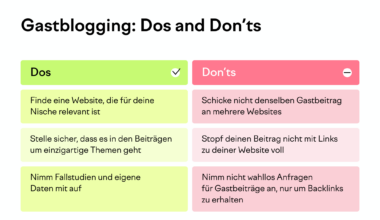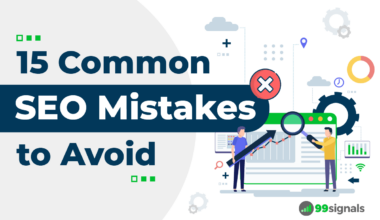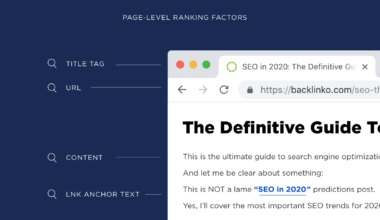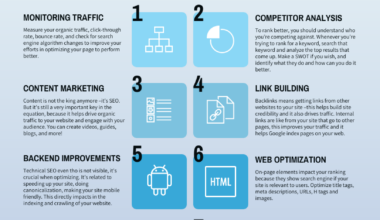Introduction to Building a Killer SEO Team
If you want your website to rank high on search engines, you need a killer SEO team. Building a team that can deliver top-notch results takes time, effort, and a well-thought-out strategy. In this section, I’ll guide you through the steps you need to take to build a successful SEO team.
Firstly, it’s essential to understand that SEO is not a one-person job. It requires a team that can work together to achieve a common goal. Each team member should have a specific role and responsibility that contributes to the overall success of the team.
To build a killer SEO team, you need to define each team member’s role and responsibility. Here is a breakdown of the roles and responsibilities you should consider:
1. SEO Manager: The SEO manager oversees the entire SEO strategy and ensures that the team’s efforts align with the company’s goals.
2. Content Writer: The content writer is responsible for creating high-quality content that is optimized for search engines.
3. Technical SEO Specialist: The technical SEO specialist ensures that the website is technically sound and optimized for search engines.
4. Link Building Specialist: The link building specialist is responsible for building high-quality backlinks to the website.
5. Analytics Expert: The analytics expert tracks and analyzes the website’s performance to identify areas for improvement.
Once you have defined each team member’s role and responsibility, it’s time to develop a comprehensive SEO strategy. The strategy should include:
1. Keyword Research: Conducting thorough keyword research to identify the keywords that your target audience is searching for.
2. On-Page Optimization: Optimizing each page on the website for the target keywords.
3. Technical SEO: Ensuring that the website is technically sound and optimized for search engines.
4. Content Creation: Creating high-quality content that is optimized for search engines.
5. Link Building: Building high-quality backlinks to the website.
Finally, it’s essential to measure the team’s success and continuously improve. Use analytics tools to track the website’s performance and make adjustments to the strategy as needed.
In conclusion, building a killer SEO team requires careful planning and execution. Define each team member’s role and responsibility, develop a comprehensive SEO strategy, and continuously measure success and improve. With the right team and strategy in place, you can achieve top rankings on search engines and drive more traffic to your website.
Defining Roles and Responsibilities
Defining roles and responsibilities is crucial in building a killer SEO team. Each team member should have a clear understanding of their duties to ensure that everyone works towards the same goals. Here are some tips on how to define roles and responsibilities:
1. Identify Key Areas: Identify the key areas that need to be covered in your SEO strategy, such as keyword research, on-page optimization, technical SEO, content creation, and link building.
2. Assign Roles: Assign each team member a specific role based on their skills and experience. For instance, a content writer may be responsible for creating high-quality content, while a technical SEO specialist may focus on website optimization.
3. Set Goals: Set achievable goals for each team member based on their role and responsibilities. This will help them stay focused and motivated.
4. Communicate Regularly: Communication is key to ensuring that everyone is on the same page. Hold regular meetings to discuss progress, challenges, and opportunities for improvement.
5. Provide Training: Provide training and resources to help team members perform their roles effectively. For instance, a technical SEO specialist may need training on website coding and optimization techniques.
6. Encourage Collaboration: Encourage collaboration between team members to share ideas, best practices, and insights. This can help improve the overall quality of your SEO strategy.
7. Monitor Progress: Monitor the progress of each team member and provide feedback on their performance. This will help them improve their skills and contribute more effectively to the team.
By defining roles and responsibilities, you can ensure that your SEO team works together to achieve your goals. Make sure to communicate regularly, set achievable goals, and provide training and resources to help team members perform their roles effectively. With a well-defined team structure, you can build a killer SEO team that drives results and helps your website rank higher on search engines.
Developing a Comprehensive SEO Strategy
A comprehensive SEO strategy is essential for achieving top rankings on search engines and driving more traffic to your website. Here are the key steps in developing a comprehensive SEO strategy:
1. Conduct Keyword Research: Keyword research is the foundation of any SEO strategy. Use tools like Google Keyword Planner or SEMrush to identify the keywords that your target audience is searching for. Focus on long-tail keywords that have high search volume and low competition.
2. Analyze Competitors: Analyze your competitors’ websites to identify their strengths and weaknesses. Look for opportunities to differentiate your website and offer unique value to your target audience.
3. Define On-Page Optimization: On-page optimization involves optimizing each page on your website for the target keywords. This includes optimizing the title tags, meta descriptions, header tags, and content. Use tools like Yoast SEO or All in One SEO Pack to ensure that your pages are properly optimized.
4. Create High-Quality Content: Creating high-quality, informative, and engaging content is crucial for SEO success. Focus on creating content that answers your target audience’s questions and provides them with valuable information. Use a mix of formats, such as blog posts, videos, infographics, and podcasts, to keep your content fresh and engaging.
5. Build High-Quality Backlinks: Backlinks are an important factor in search engine rankings. Focus on building high-quality backlinks from authoritative websites in your niche. Use tools like Ahrefs or Moz to identify potential link opportunities.
6. Optimize for Technical SEO: Technical SEO involves optimizing your website’s technical aspects, such as page speed, mobile responsiveness, and site structure. Use tools like Google PageSpeed Insights or GTmetrix to identify technical issues and make improvements.
7. Monitor and Analyze Results: Use analytics tools like Google Analytics or SEMrush to track your website’s performance. Monitor key metrics like organic traffic, bounce rate, and conversion rate, and make adjustments to your strategy as needed.
By following these steps, you can develop a comprehensive SEO strategy that drives results and helps your website rank higher on search engines. Remember to focus on providing value to your target audience, creating high-quality content, and building high-quality backlinks. With a well-executed SEO strategy, you can achieve top rankings on search engines and drive more traffic to your website.
Mastering the Art of Keyword Research
Keyword research is a crucial aspect of any successful SEO strategy. It helps you identify the keywords that your target audience is searching for and optimize your website accordingly. Here are the key steps in mastering the art of keyword research:
1. Identify Your Target Audience: The first step in keyword research is to identify your target audience. Who are they, what are their interests, and what problems are they trying to solve? Use tools like Google Analytics or Facebook Insights to gather data on your target audience.
2. Brainstorm Keywords: Once you have identified your target audience, brainstorm a list of potential keywords that they might use to search for your products or services. Use tools like Google Trends or Keyword Tool to expand your list.
3. Analyze Keyword Competition: Use tools like SEMrush or Ahrefs to analyze the competition for each keyword. Look for keywords with high search volume and low competition to maximize your chances of ranking high on search engines.
4. Prioritize Keywords: Prioritize your keywords based on relevance, search volume, and competition. Focus on long-tail keywords that are more specific and have higher intent.
5. Use Keyword Variations: Use variations of your target keywords throughout your website, including in your content, title tags, meta descriptions, and URLs. This will help you rank for a wider range of search queries.
6. Monitor Keyword Performance: Use analytics tools to monitor the performance of your target keywords. Track your website’s ranking for each keyword, as well as the amount of traffic and conversions generated by each keyword.
7. Refine Your Strategy: Refine your keyword strategy as needed based on your performance data. Focus on optimizing for high-performing keywords and expanding your list of target keywords.
By mastering the art of keyword research, you can optimize your website for the keywords that your target audience is searching for and drive more traffic to your website. Remember to prioritize long-tail keywords, use variations of your target keywords, and monitor your keyword performance to refine your strategy over time. With a well-executed keyword strategy, you can achieve top rankings on search engines and drive more traffic to your website.
Embracing Technical SEO
Technical SEO is a crucial aspect of any successful SEO strategy. It involves optimizing the technical aspects of your website to make it more search engine-friendly. Here are some tips on how to embrace technical SEO:
1. Optimize Website Speed: Website speed is a crucial factor in search engine rankings. Ensure that your website loads quickly by optimizing images and reducing the number of HTTP requests. Use tools like Google PageSpeed Insights or GTmetrix to identify and fix speed issues.
2. Make Your Website Mobile-Friendly: Mobile optimization is another critical factor in search engine rankings. Ensure that your website is mobile-friendly by using responsive design and optimizing for mobile devices.
3. Improve Site Structure: Site structure refers to the way your website is organized and linked together. Ensure that your website has a clear hierarchy and that pages are linked together logically. Use tools like Screaming Frog or SEMrush to analyze your site structure and make improvements.
4. Use Schema Markup: Schema markup is a type of code that helps search engines understand the content of your website better. Use schema markup to provide more context to your content and improve your chances of ranking for featured snippets.
5. Optimize URL Structure: URL structure refers to the way your website’s URLs are organized. Ensure that your URLs are short, descriptive, and include target keywords. Use tools like Yoast SEO or All in One SEO Pack to optimize your URLs.
6. Use SSL: SSL is a security protocol that encrypts data transmitted between your website and its visitors. Using SSL can help improve your website’s security and search engine rankings.
7. Fix Broken Links: Broken links can harm your website’s user experience and search engine rankings. Use tools like Broken Link Checker or Ahrefs to identify and fix broken links.
By embracing technical SEO, you can improve your website’s search engine rankings and provide a better user experience for your visitors. Remember to optimize website speed, improve site structure, use schema markup, and fix broken links. With a well-executed technical SEO strategy, you can achieve top rankings on search engines and drive more traffic to your website.
Final Thought: Measuring Success and Continuously Improving
Measuring the success of your SEO team is essential to ensure that your efforts are delivering results. Here are some tips on how to measure success and continuously improve:
1. Set Measurable Goals: Set specific, measurable goals for your SEO strategy, such as increasing organic traffic, improving search engine rankings, or generating more leads. Use analytics tools to track your progress towards these goals.
2. Track Key Metrics: Use analytics tools like Google Analytics or SEMrush to track key metrics like organic traffic, bounce rate, conversion rate, and keyword rankings. Monitor these metrics regularly to identify areas for improvement.
3. Conduct Regular Audits: Conduct regular audits of your website to identify technical issues, broken links, or other areas for improvement. Use tools like Screaming Frog or SEMrush to identify these issues and fix them promptly.
4. Monitor Competitors: Monitor your competitors’ SEO strategies to identify opportunities for improvement. Look for gaps in their strategies that you can fill, or areas where you can differentiate your website from theirs.
5. Test and Experiment: Test and experiment with different SEO strategies to identify what works best for your website. Use A/B testing to compare different versions of your website and see which one performs better.
6. Stay Up-to-Date: The world of SEO is constantly evolving, so it’s essential to stay up-to-date with the latest trends and best practices. Attend industry events, read industry blogs, and connect with other SEO professionals to stay informed.
By measuring success and continuously improving your SEO strategy, you can achieve top rankings on search engines and drive more traffic to your website. Remember to set measurable goals, track key metrics, conduct regular audits, monitor competitors, test and experiment, and stay up-to-date with the latest trends and best practices. With a well-executed SEO strategy, you can achieve your business goals and drive success for your website.






















